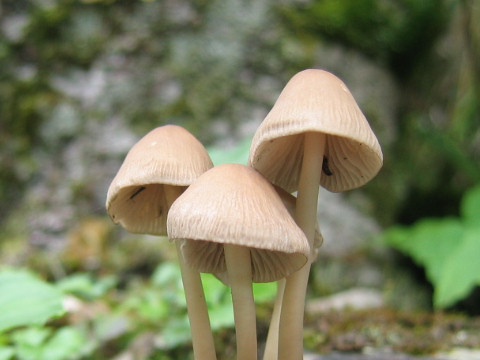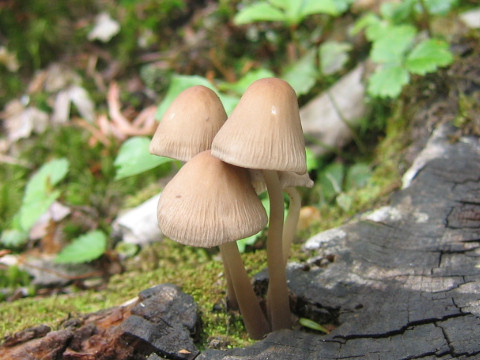 |




|

|
わが国の各地をはじめ、北アメリカやヨーロッパなどに広く分布しています。春から秋にかけて、針葉樹の材上に束生または群生します。傘は円錐形から鐘形で、暗褐色からベージュ色に変化します。和名は、このキノコが灰汁(あく)のような臭いがすることから。硝酸のような薬品臭とも表現されます。写真は「おおしらびそ」の切り株に生えたもの。
|

|
キシメジ科クヌギタケ属のキノコ類で、学名は Mycena stipata。英名はありません。
|

|
The "Aku-nioi-take" (Mycena stipata) belongs to the family Tricholomataceae. It is a fungus that is widely distributed throughout Japan, North America, and Europe. It grows in bunches or clumps on coniferous trees from spring to fall. The cap is conical to bell-shaped and vary in color from dark brown to beige. The Japanese name comes from the mushroom's lye-like odor. It is also described as having a chemical smell like nitric acid. The photo shows one growing on a stump of "Maries fir".
|

|
長野県小谷村千国乙「栂池自然園」にて、2005年07月14日撮影。
|



